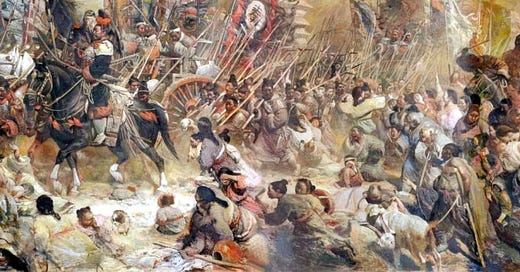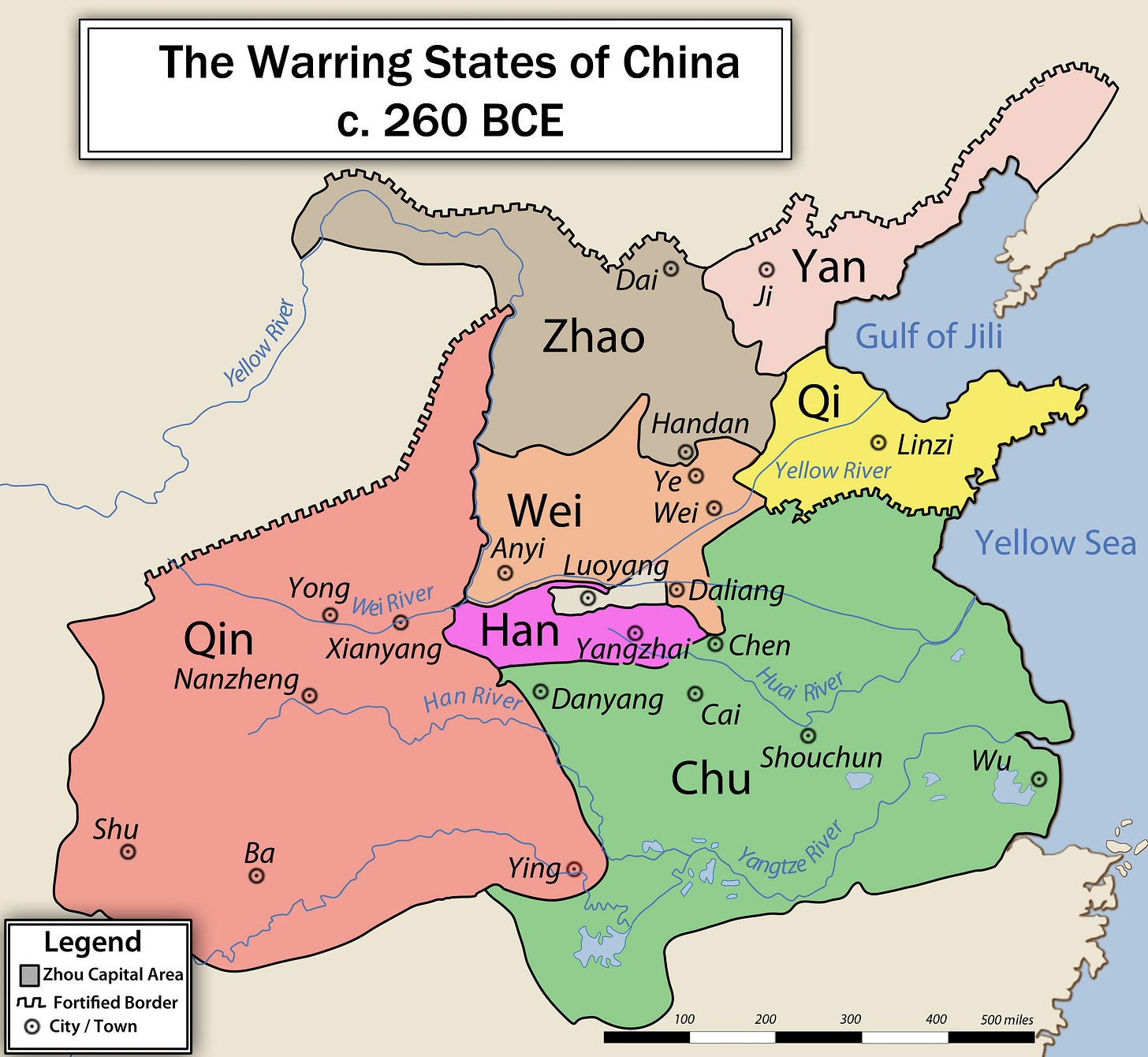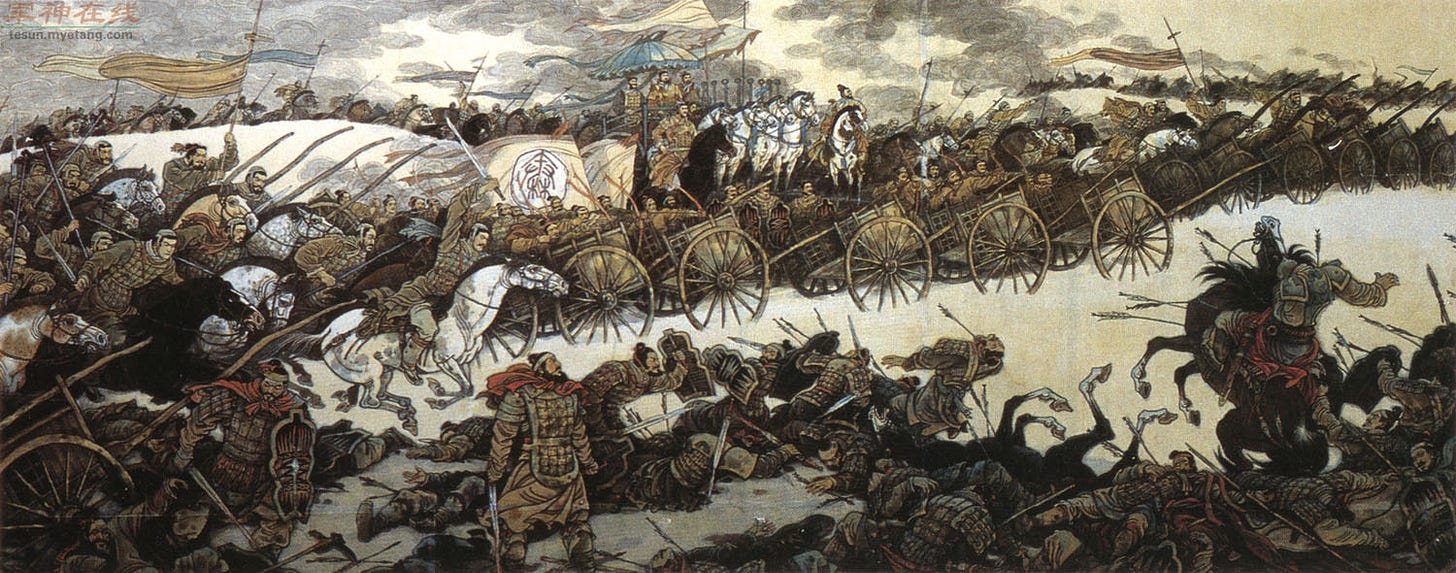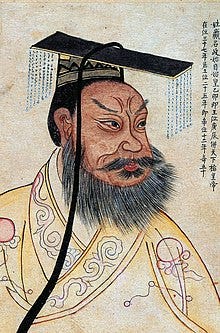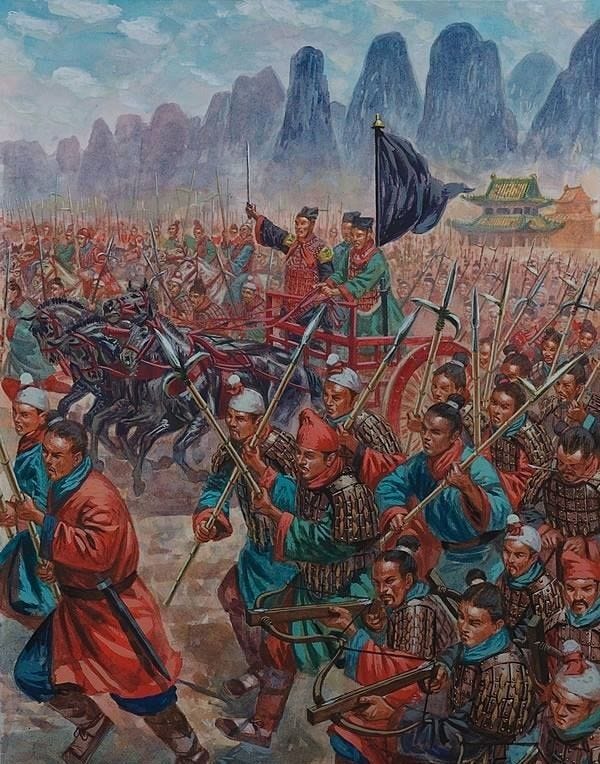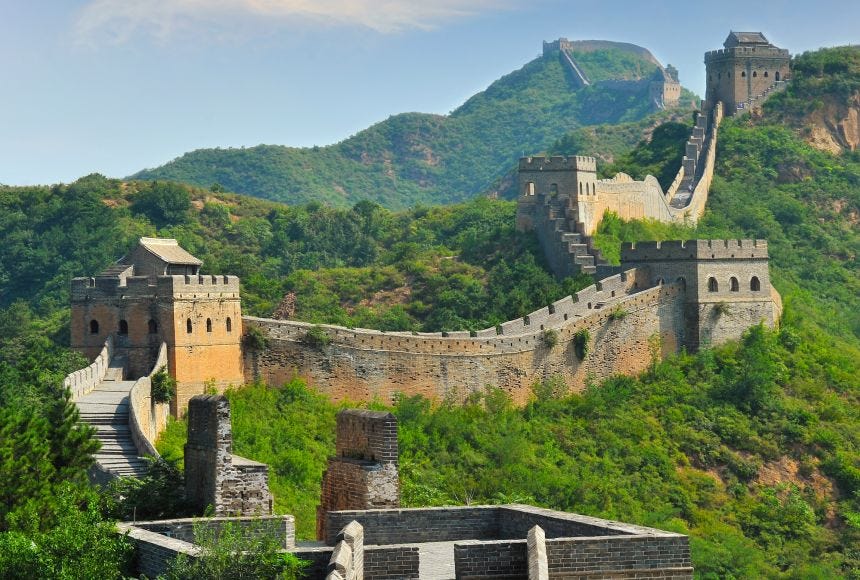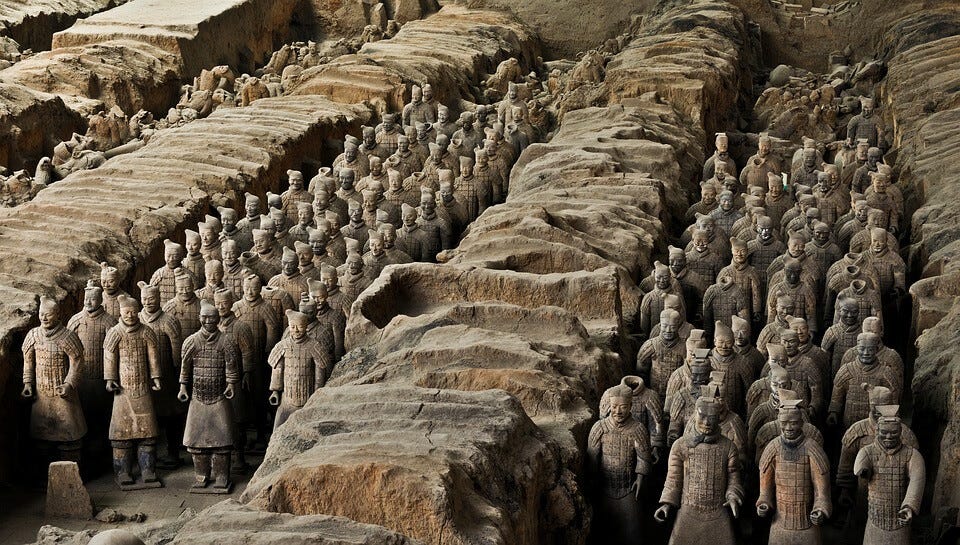A Nation is Born
Hello Dear Reader,
In this next edition of Flint and Steal, we come to a man who would unify a people under a single dynasty. This time he is not Roman nor Greek, Caledonian nor Briton, Gothic nor Visigothic, he is Chinese and one of the greatest men of the early East. Qin Shi Huang, would become the first Emperor of China, and a visionary who would eradicate his enemies with all the means at his disposal. So, come dear reader, take a seat around my fire and let’s begin, the Seven Warring States fight each other for dominance and there can be only one victor.
The Bloody Stage
Now dear reader, if you are new here, we usually set the stage in order to understand the world in which we have been thrust. The area that would become China in around 260 B.C. would be divided into Seven Warring States. The Seven Warring states would be formed as the Zhou dynasty fell apart. Dukes from Qi, Yan, Zhao, Han, Wei, Chu, and Qin had all declared themselves to be kings and the “country” fell apart. A small interesting tidbit of information is that this constant state of war between these kingdoms helped Sun Tzu develop his book: “The Art of War.”
Now, these states would all differ in their strengths and weaknesses but there were two major players. The first one was the state of Zhao and the other was the state of Qin. We will be mostly focusing on the Qin as that is the kingdom in which our protagonist (or antagonist, depending on your perspective) will be housed in.
As stated, to understand the impact of Qin Shi Huang, we must first understand the context of ancient China before his era. As we journey back to 259 B.C., the land was divided into Seven Warring States, each vying for supremacy. Evidence of this is The Battle of Changping, a monumental clash between Qin and Zhao, resulted in Qin's victory, creating a point which would mark Qin as the frontrunner to unify China.
Now, dear reader, you may have noticed I have put monumental in italics as I must make emphasis in this specific word. This Battle was monumental and even in italics, I believe I run the risk of understating it. The state of Zhao entered the battle with 450,000 men and the state of Qin entered the battle with 550,000. That is a combined strength of one million men to fight one battle in 259 B.C . What is even more incredible, dear reader, is that of the 450,000 men who would fight for Zhao, they would almost all perish and nearly half of Qin’s forces would also die. What is even worse, (yes, it gets worse), is that during the battle, as the Qin forces laid siege to Zhao’s hill defenses for 46 days, the soldiers, in a desperate bid for survival, killed and ate all the horses as well as allegedly resorting to cannibalism to survive the siege. What is even worse (yes, dear reader, it gets worse) is that not all of Zhao troops would be killed in battle but afterward as prisoners as the Qin could not feed all the losing forces. They would kill the prisoners by burying them alive. The combined death toll of this battle would be around 700,000 men. It has been noted that this was one of the bloodiest battles of human history. That is the context for the time period we are entering, that is the stage.
Our Conqueror
Now we come to the man. Qin Shi Huang was born in 259 B.C., although he was not named that yet. His birth name was Yin Zheng and his parentage is somewhat mysterious. Cg, born to Zhuangxiang (a prince who would become king of the Qin state) and Zhao Ji, a potential concubine. However, some say that Yin Zheng (Qin Shi Huang) is really the son of the merchant Lu Buwei, who is said to have arranged the prince to fall in love with Zhao Ji after she had just gotten pregnant with Lu Buwei’s child. Regardless, he ascended the throne of the Qin state at a mere 13 years of age. Qin Shi Huang’s reign began with a singular purpose—to unify the fragmented states and forge a realm of cohesion. But this would be costly, and the price of this dream would be paid in blood.
As Qin fought for nothing short of dominance, it found itself plague by internal struggle as well. There was a revolt led by Lao Ai. Lao Ai, a former eunuch of the Qin court, orchestrated a daring plot to seize power by conspiring with Empress Dowager Zhao, the mother of the young emperor (but not the real mother, a wife of Zhuangxiang). Together, they hatched a scheme to install Lao Ai as the de facto ruler of the empire, using his illicit relationship with the empress dowager to manipulate court affairs. However, their clandestine intrigues were eventually exposed, leading to a swift and brutal suppression of the revolt by Qin authorities.
The leaders of this revolt or those that stood to gain the most by it, also lost the most. Lao Ai met a grisly fate with death by “disruption” or being pulled apart by horses. Empress Dowager Zhao faced punishment but not death, as she would live but be under house arrest the rest of her days. Lu Buwei (most likely Qin Shi Huang’s real father) would actually be banished after this affair as well and would die via suicide after drinking poison in 235 B.C. This event would cement Qin Shi Huang’s rule and be a lesson as well as example to those who would dare to challenge him.
Unification Through Blood
After this revolt, the king began to grow more paranoid about enemies around him and for good reason as people were constantly making attempts on his life. One reason for this was desperation, not by merely internal enemies but also external ones. The states surrounding Qin were watching Qin Shi Huang consolidate power and felt that their end was near. They feared invasion and the consequences to losing a war. Their fear would be well placed.
Qin Shi Huang's military campaigns were relentless, and his armies marched with an unwavering determination. In 230 B.C., the Han kingdom fell to Qin. In a stroke of luck for the Qin, an Earthquake rocked the state of Zhao that was already left weakened by the previous Battle of Changping. Qin would take advantage of the situation and invade. During this invasion, they would also complete their conquests of other kingdoms. The kingdom of Wei fell in 225 B.C., followed by the Chu in 223 B.C.. Zhao and the Yan kingdom would hold out until 222 B.C. Qi, the final holdout, would fall in 221 B.C.
At last, Qin Shi Huang achieved the unimaginable—he united the warring states, marking the birth of the Qin Dynasty. Proclaiming himself as the one ruler of China, he adopted the title of "First Emperor." The once-disparate realms were now bound by a common purpose and governed under a centralized system. There was peace, but an uncertain one.
An Uncertain Peace
After China had been unified under the Qin dynasty, Qin Sin Huang consolidated his power even more. The bureaucracy was replaced with appointed officials event more loyal to him.
However, it was not all blood and death in Qin China, just for the most part. Once a unified China had been achieved, one of the first measures would be to move the capital to Xianyang. There would also be robust implementation of a standardized weights and measures system as well as freshly minted copper coins. Most impressively, there would be a simplified Chinese script. As we know from previous publications, not many cultures had written anything down at all, less simplify a written language. There was also the construction of the Ling Canal, linking the Pearl and the Yangtze Rivers. All of these things would have undoubtedly helped increase trade and prosperity for many people living in China under the Qin Dynasty.
There was also the construction of the northern part of the Great Wall of China. Even thought a unified China has been achieved with the defeat of the numerous warring states, there was still the threat of northern, nomadic raiders called the Xiongnu. Something interesting to note, is that the Xiongnu are actually some of the ancestors of Attila the Hun, whom we have recently gotten to know. I should note, however, that although the Great Wall of China is certainly great feat, the history behind its construction is rather brutal. Most of the work was completed by a great mass of slaves, estimated to be in the hundreds of thousands. Not only this but an unknown number of them died building the wall.
Another thing I should mention was that there was a great Confucian Purge implemented by the Qin Dynasty. Over 1,000 Confucianists and philosophers would die under the reign of Qin Shi Huang. He also had many of their books burned as they were viewed as a threat to Qin Shi Huang’s Legalist rule. His word was law and those that defied him were the enemy. In a strange turn of events, the Warring States period of Chinese history proved to be a tremendous time for Confucianists as the decentralized system of rule and constant wars did not allow governments to worry about anything else. In other words, the Confucianists were, at large, left alone.
The Mortal Immortal
As the years rolled on, being constantly surrounded by death and after numerous assassination attempts, Qin Shi Huang went on a path to find immortality. His doctors, in their infinite wisdom, prescribed him “quicksilver,’ although in today’s language we have anther word for it: Mercury. Yes, dear reader, it is an ironic fate that Qin Shi Huang’s quest to immortality would lead him to certain death, as Mercury poisoning can be quite fatal.
However, in his mind and the mind of his doctors there was no such thing as Mercury poisoning. So, in the off-chance that they were indeed wrong and Qin Shi Huang would eventually die, he decided to build himself a massive tomb with an 8,000 man terracotta army complete with individual facial features, real weapons, terracotta horses and chariots.
The tomb would prove to be a good investment as the Emperor would die, most likely from Mercury poisoning, in 210 B.C. A year earlier, however, in 211 B.C., there would be a foreshadowing to his death in the form of a meteor. Yes, dear reader, you read that right, a meteor had fallen in the city of Dongjun and someone, most certainly with grievances for the Emperor, had written, "The First Emperor will die and his land will be divided” into the fallen rock. When the vandalist did not come forward and confess, Qin Shi Huang had everyone in the area executed and the stone from space pulverized. However, it did signal to him and everyone else that he had lost the Mandate of Heaven, or, in other words, the right to rule.
What Comes Up, Must Come Down
After his death, there was seemingly immediate turmoil. Qin Shi Huang’s minsters tricked the heir and first son, Fusu into committing suicide so another son, Huhai could come to power. Apparently, the minsters had forged a letter to Fusu from Qin Shi Huang commanding him to commit the deed. I know what you are thinking, dear reader, it seems strange to me too.
Huhai would reign as the second Emperor for a short time before the previous nobles of the warring states would throw a unified China into unrest. It did not take much as Qin Shi Huang was not very well liked. In 207 B.C., the empire would officially fall. Chu rebels would defeat the forces of the empire at the Battle of Julu, brining an end to one of the most brutal, bloody, and advanced periods of Chinese history.
Well, dear reader, it looks like the story of the First Emperor and a Unified China come to an end. I would like to thank you for joining me and would like to let you know that I thoroughly enjoyed our discussion. Join me next time where we will once again be working our way West. There is grave business afoot.
I Remain Sincerely Yours,
-Flint

